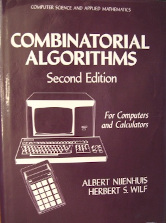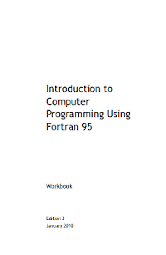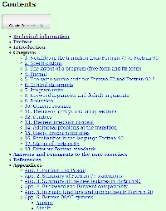Last Updated on December 19, 2024
4. Combinatorial Algorithms by Albert Nijenhuis and Herbert S. Wilf
 Combinatorial Algorithms provides a set of Fortran subroutines for combinatorial algorithms in the spirit of numerical analysis packages.
Combinatorial Algorithms provides a set of Fortran subroutines for combinatorial algorithms in the spirit of numerical analysis packages.
The topics covered range from the random and sequential production of subsets, permutations, compositions, partitions, etc.; graph algorithms – finding spanning forests, chromatic polynomials, coloring, random trees, minimal length spanning trees, Euler and Hamiltonian circuits, etc.; finding Möbius functions, the permanent, maximal flow, sorting and some theoretical subjects. Some important subjects are omitted, such as testing for planarity, tree and graph isomorphism, connectivity of a graph, maximum matching, etc.
Each problem includes a theoretical background, an algorithm, a flowchart and a Fortran subroutine.
Reproduction of the downloaded version is permitted for any valid educational purpose of an institution of learning, in which case only the reasonable costs of reproduction may be charged. Reproduction for profit or for any commercial purposes is strictly prohibited.
5. Introduction to Computer Programming Using Fortran 95 by Dr Marshall, Helen Talbot, Neil Hamilton-Smith
 Introduction to Computer Programming Using Fortran 95 is a student guide which introduces the reader to Fortran.
Introduction to Computer Programming Using Fortran 95 is a student guide which introduces the reader to Fortran.
The book comes complete with questions to tax the budding Fortran developer.
Chapters cover:
- Fundamentals of Computer Programming.
- Logical Operations and Control Constructs – includes control flow, IF statement, IF … THEN … ELSE construct, IF … THEN … ELSEIF construct, and more.
- Arrays – good coverage including array element ordering, array sections, array conformance, array syntax, functions (COUNT, SUM, MOD, MINVAL, MAXVAL, MINLOC, MAXLOC), Array I/O and more.
- Procedures – covers functions, subroutines, argument association, argument intent, local objects, SAVE attribute, scoping rules, dummy array arguments, external functions and more.
- Modules and Derived Types – plan geometry program, reusability- modules, restricting visibility, the USE Renames facility, USE ONLY statement, derived types, and true portability.
6. Fortran 90 for the Fortran 77 Programmer by Bo Einarsson and Yurij Shokin
 Fortran 90 for the Fortran 77 Programmer is written in order to ease the transition from the very common and popular programming language Fortran 77 to the more modern Fortran 90. This transition uses the fact that Fortran 77 is a pure subset of Fortran 90.
Fortran 90 for the Fortran 77 Programmer is written in order to ease the transition from the very common and popular programming language Fortran 77 to the more modern Fortran 90. This transition uses the fact that Fortran 77 is a pure subset of Fortran 90.
Permission is granted to copy and/or print this hypertext as long as the copyright notice and this permission is included on all copies.
Next page: Page 3 – User Notes on Fortran Programming and more books
Pages in this article:
Page 1 – Interactive Fortran 77: A Hands on Approach and more books
Page 2 – Combinatorial Algorithms and more books
Page 3 – User Notes on Fortran Programming and more books
All books in this series:
| Free Programming Books | |
|---|---|
| Ada | ALGOL-like programming language, extended from Pascal and other languages |
| Agda | Dependently typed functional language based on intuitionistic Type Theory |
| Arduino | Inexpensive, flexible, open source microcontroller platform |
| Assembly | As close to writing machine code without writing in pure hexadecimal |
| Awk | Versatile language designed for pattern scanning and processing language |
| Bash | Shell and command language; popular both as a shell and a scripting language |
| BASIC | Beginner’s All-purpose Symbolic Instruction Code |
| C | General-purpose, procedural, portable, high-level language |
| C++ | General-purpose, portable, free-form, multi-paradigm language |
| C# | Combines the power and flexibility of C++ with the simplicity of Visual Basic |
| Clojure | Dialect of the Lisp programming language |
| ClojureScript | Compiler for Clojure that targets JavaScript |
| COBOL | Common Business-Oriented Language |
| CoffeeScript | Transcompiles into JavaScript inspired by Ruby, Python and Haskell |
| Coq | Dependently typed language similar to Agda, Idris, F* and others |
| Crystal | General-purpose, concurrent, multi-paradigm, object-oriented language |
| CSS | CSS (Cascading Style Sheets) specifies a web page’s appearance |
| D | General-purpose systems programming language with a C-like syntax |
| Dart | Client-optimized language for fast apps on multiple platforms |
| Dylan | Multi-paradigm language supporting functional and object-oriented coding |
| ECMAScript | Best known as the language embedded in web browsers |
| Eiffel | Object-oriented language designed by Bertrand Meyer |
| Elixir | Relatively new functional language running on the Erlang virtual machine |
| Erlang | General-purpose, concurrent, declarative, functional language |
| F# | Uses functional, imperative, and object-oriented programming methods |
| Factor | Dynamic stack-based programming language |
| Forth | Imperative stack-based programming language |
| Fortran | The first high-level language, using the first compiler |
| Go | Compiled, statically typed programming language |
| Groovy | Powerful, optionally typed and dynamic language |
| Haskell | Standardized, general-purpose, polymorphically, statically typed language |
| HTML | HyperText Markup Language |
| Icon | Wide variety of features for processing and presenting symbolic data |
| J | Array programming language based primarily on APL |
| Java | General-purpose, concurrent, class-based, object-oriented, high-level language |
| JavaScript | Interpreted, prototype-based, scripting language |
| Julia | High-level, high-performance language for technical computing |
| Kotlin | More modern version of Java |
| LabVIEW | Designed to enable domain experts to build power systems quickly |
| LaTeX | Professional document preparation system and document markup language |
| Lisp | Unique features - excellent to study programming constructs |
| Logo | Dialect of Lisp that features interactivity, modularity, extensibility |
| Lua | Designed as an embeddable scripting language |
| Markdown | Plain text formatting syntax designed to be easy-to-read and easy-to-write |
| Objective-C | Object-oriented language that adds Smalltalk-style messaging to C |
| OCaml | The main implementation of the Caml language |
| Pascal | Imperative and procedural language designed in the late 1960s |
| Perl | High-level, general-purpose, interpreted, scripting, dynamic language |
| PHP | PHP has been at the helm of the web for many years |
| PostScript | Interpreted, stack-based and Turing complete language |
| Prolog | A general purpose, declarative, logic programming language |
| PureScript | Small strongly, statically typed language compiling to JavaScript |
| Python | General-purpose, structured, powerful language |
| QML | Hierarchical declarative language for user interface layout - JSON-like syntax |
| R | De facto standard among statisticians and data analysts |
| Racket | General-purpose, object-oriented, multi-paradigm, functional language |
| Raku | Member of the Perl family of programming languages |
| Ruby | General purpose, scripting, structured, flexible, fully object-oriented language |
| Rust | Ideal for systems, embedded, and other performance critical code |
| Scala | Modern, object-functional, multi-paradigm, Java-based language |
| Scheme | A general-purpose, functional language descended from Lisp and Algol |
| Scratch | Visual programming language designed for 8-16 year-old children |
| SQL | Access and manipulate data held in a relational database management system |
| Standard ML | General-purpose functional language characterized as "Lisp with types" |
| Swift | Powerful and intuitive general-purpose programming language |
| Tcl | Dynamic language based on concepts of Lisp, C, and Unix shells |
| TeX | Markup and programming language - create professional quality typeset text |
| TypeScript | Strict syntactical superset of JavaScript adding optional static typing |
| Vala | Object-oriented language, syntactically similar to C# |
| VHDL | Hardware description language used in electronic design automation |
| VimL | Powerful scripting language of the Vim editor |
| XML | Rules for defining semantic tags describing structure ad meaning |
